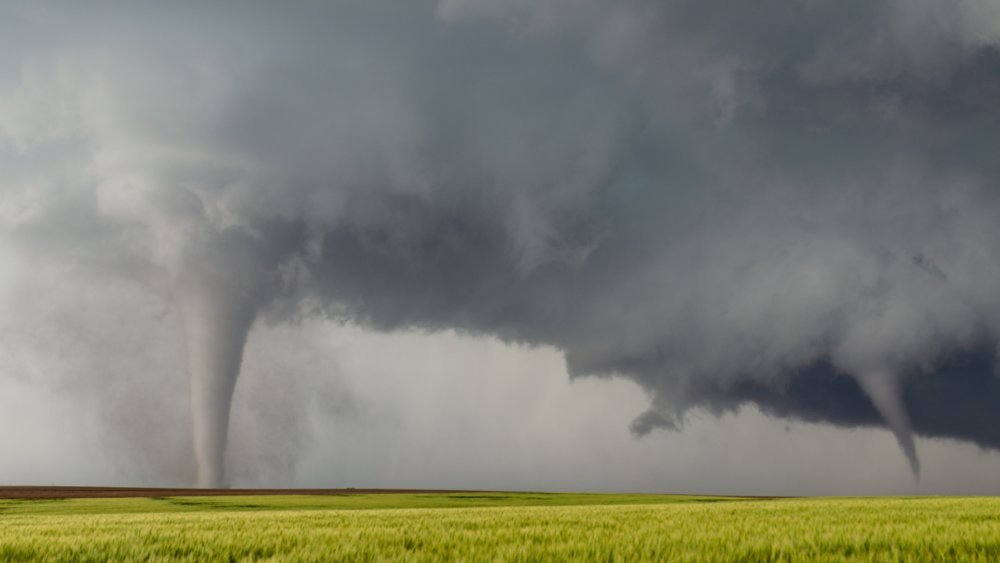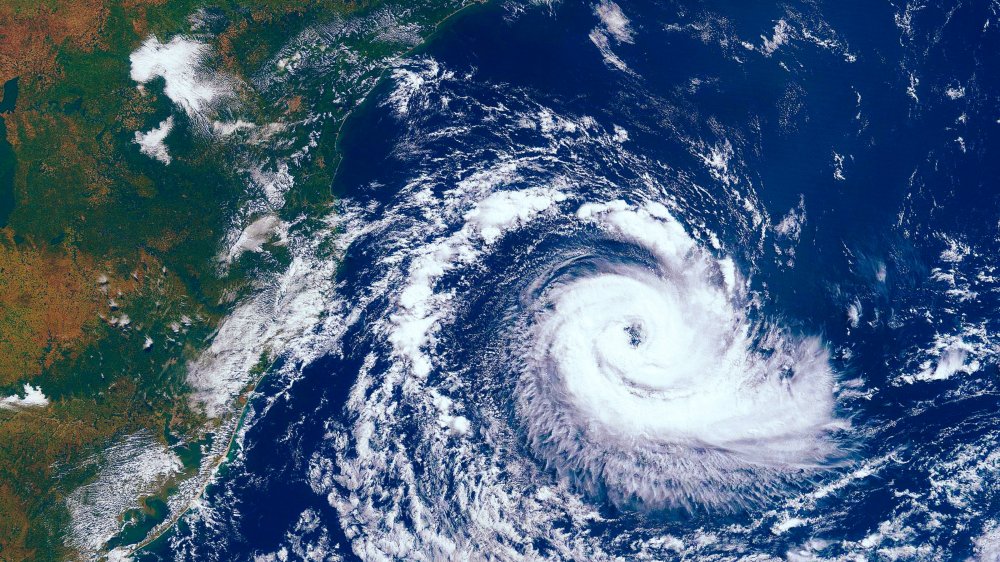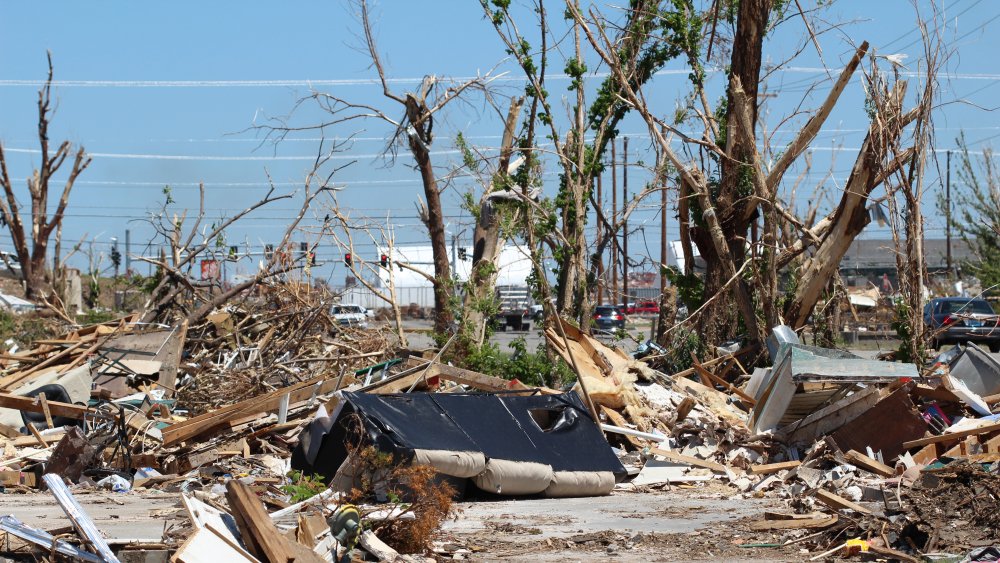The Real Reason Why Tornadoes Happen
Tornadoes are thunderstorms gone completely wild — violent and unpredictable, causing massive amounts of damage in very short periods of time. How do they come to be? Why do they take us by surprise?
National Geographic describes a tornado as "a violently rotating column of air that extends between the Earth's surface and a cloud, usually a cumulonimbus cloud." Most last for fewer than 10 minutes, have wind speeds of under 110 miles per hour, are about 250 feet across, and only travel for a few miles before dying, but others last up to half an hour, have wind speeds of 300 miles an hour, stretch up to two miles wide, and can travel for "dozens of miles."
Tornadoes start with thunderstorms, which require a combination of warm, moist air near the surface and relatively cold, dry air up higher. The warm air rises; to create the tornado's funnel cloud, there must first be "winds that increase in strength and change direction with height," which can create an updraft that "tends to rotate" and create a "supercell." In about 30 percent of cases, this leads to a tornado in which "air descending from the supercell causes rotation near the ground." There's no clear explanation as to why some thunderstorms turn into tornadoes and others don't, nor do scientists know why they die. Research meteorologist Harold Brooks notes, "Eventually the air gets too cold and it chokes off the inflow of new air into the storm," but specifics are sparse.
Tornado Alley, U.S.A.
Per another posting at National Geographic, tornadoes can happen at any time and in any state, but Texas holds the record, averaging 120 per year. They've been reported around the world, including India, Argentina, and Great Britain, but are primarily a United States phenomenon. The "Tornado Alley" region, home of the most powerful and destructive storms, encompasses several states in the center of the country: South Dakota, Nebraska, Kansas, Oklahoma, Texas, and eastern Colorado. Along the Gulf of Mexico, tornado season occurs in early spring; as the jet stream heads north, tornadoes follow, with northern states experiencing more tornadoes in the summer. Tornadoes especially like the late afternoon because "by this time the sun has heated the ground and the atmosphere enough to produce thunderstorms."
Tornadoes can be killers, causing 80 deaths along with more than 1,500 injuries each year. Property damage by tornadoes is significant: about $400 million in the United States annually. The death rate has gone down over the years as forecasting and warning systems have improved. Meteorologists use "Doppler radar, satellites, weather balloons, and computer modeling to watch the skies for severe storms and tornadic activity." Because of Doppler, the average warning time for tornadoes has increased to about 13 minutes — still not a lot, but considerably better than the five minutes' warning of the 1980s. The fact that this is still a relatively short amount of time reinforces how unpredictable and sudden these storms really are.
'Sheer destruction'
The deadliest tornado in history hit the Manikganj district of Bangladesh in 1989, says The Weather Channel. The storm leveled two towns, killed 1,300 people, injured 12,000, and left 80,000 homeless. According to severe weather expert Dr. Greg Forbes, "Bangladesh experiences some of the strongest and deadliest tornadoes outside the U.S.," although there are fewer — averaging just six per year.
According to the National Oceanic and Atmospheric Administration, of the 10 deadliest tornadoes in U.S. history, just one occurred in the 21st century. In May of 2011, a large part of Joplin, Missouri was, per the National Weather Service, devastated by a tornado that was clocked at over 200 miles per hour. The storm killed 158 people and injured more than 1,000. The tornado warning came just 17 minutes before the tornado touched down. The storm's strength and speed was notable, as well as terrifying, for the "sheer destruction" it inflicted indiscriminately: some homes and businesses were swept off their foundations, while others were crushed in place — pancaked. Vehicles of all sizes also fell victim, "including buses, tractor trailers and vans" that were picked up and dropped, crushed, or rolled over and over, damaged beyond recognition. The National Weather Service has been keeping track of tragic events like this since 1950, and ranks the Joplin tornado at #7 among the most deadly on record.


